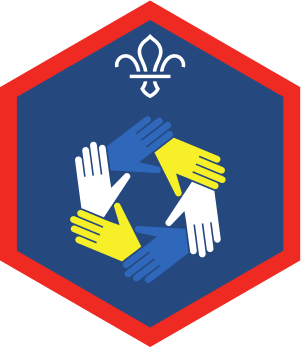Build your squad
You’ll need
- Scrap paper
- Pens or pencils
Before you begin
- Use the safety checklist to help you plan and risk assess your activity. Additional help to carry out your risk assessment, including examples can be found here. Don’t forget to make sure all young people and adults involved in the activity know how to take part safely.
- Make sure you’ll have enough adult helpers. You may need some parents and carers to help if you’re short on helpers.
Play the game
- Everyone should sit in a large circle.
- Everyone should choose a famous person or fictional character that everyone playing the game will know. They should secretly tell the person leading the game who they’ve chosen.
- The person leading the game should write down all of the chosen names and add three of their own to the list to keep it interesting.
- The person leading the game should read out all of the chosen names in a random order. Everyone should try to remember the list and think about who may have chosen each name.
- The first player should choose someone and try and guess their character.
- If they guess correctly, they become a squad captain – the person they chose should move to sit near or behind them and become a member of their squad. The squad captain should guess again.
- If they guess wrong, the next person in the circle should have a turn at guessing.
- Everyone should keep taking it in turns to guess. Once someone becomes a member of a squad, they don’t get their own turn – but they can help their squad captain work out the remaining names. The squad captain has the final decision on their squad’s guess.
- If someone guesses the name of a squad captain, they gain their entire squad. If people are struggling, the person leading the game can repeat the list of names up to two more times.
- The game ends when one squad captain wins by having all of the other players as members of their squad.
Reflection
This game needed people to work together in their squads to figure out who had chosen the different names. Was it easier to work out who was who when people could chat to others in their squad?
How did the groups work together to reach their decisions? What was it like having a squad captain? Did they listen to everyone before making their decision? When else may people in a team have to trust their leader to make the final decision?
Did anyone base their guesses on tactics? Maybe some people tried to figure it out one name at a time, while others focussed on guessing specific people’s names.
Sometimes solving problems is easier when there are other people to talk to. How did working together make problem-solving easier?
People may think about how they could share responsibility for remembering all of the guesses that had already been made. Would people approach the game differently if they played it again?
Safety
All activities must be safely managed. You must complete a thorough risk assessment and take appropriate steps to reduce risk. Use the safety checklist to help you plan and risk assess your activity. Always get approval for the activity, and have suitable supervision and an InTouch process.
You don’t have to choose people – the game works just as well with other categories, such as jobs or items of food.
You don’t have to limit the number of times you repeat the list – you could repeat it often or write all the names somewhere that everyone can see them.
If people write their characters down, remind them that spelling doesn’t matter.
All Scout activities should be inclusive and accessible.
